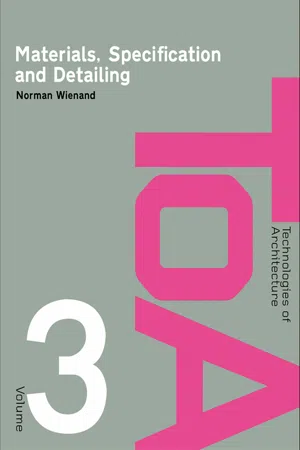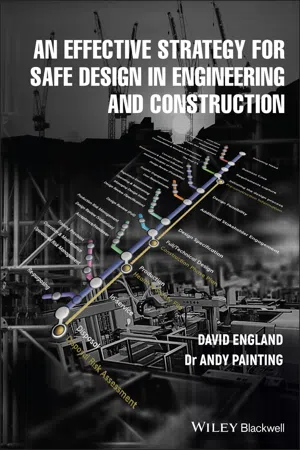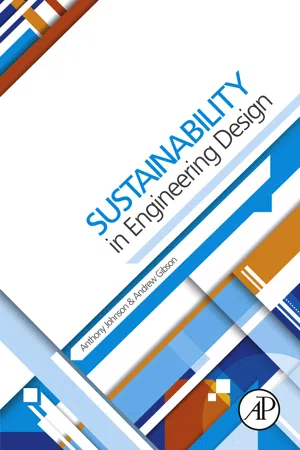Design Considerations
Design considerations refer to the factors and elements that must be taken into account when creating a product, system, or solution. This includes aspects such as functionality, aesthetics, usability, cost, materials, and environmental impact. By carefully considering these factors during the design process, engineers and designers can create more effective and efficient solutions.
5 Key excerpts on "Design Considerations"
- eBook - ePub
Children's Learning in Primary Schools
A guide for Teaching Assistants
- Mike Cowdray(Author)
- 2012(Publication Date)
- Routledge(Publisher)
...CHAPTER 7 Design and Technology What is Design and Technology really about? This subject is about making things – anything and everything. The whole of the man-made environment, at home, in the street and throughout the world. From paper clips to aeroplanes, from curtains to power stations, from pencils to pizzas – wherever we make something, that is an example of Design and Technology. It includes both high-tech things, such as medical equipment, cars, the latest communication devices, and low-tech things, such as clothes pegs, plastic bags, garden paths – they all need to be designed, before being made. Technology in society The pace of technological change is faster than at any time in history, and it shows no sign of slowing down. We read of scientific breakthroughs nearly every day in the newspapers. And wherever science increases our knowledge and understanding, technology uses that new knowledge and understanding to change the way we live and, hopefully, improve the quality of our lives. Technologists are creative people who find ways to: meet people’s needs; satisfy people’s wants and aspirations; exploit opportunities, perhaps developing a new use for something already familiar to us. They are practical problem-solvers who come up with ideas, inventions and innovations, either creating new products, or redesigning existing ones to improve efficiency or provide greater appeal to the user. We know when objects have been designed and made well, because they have two particular qualities: they fulfil their intended purpose – that is, they work ; and they are also aesthetically pleasing – that is, they satisfy people’s preferences in terms of their look, sound, taste, touch and smell. Some technologies move very quickly indeed (for example, electronic communication devices) – these tend to be the ones that appeal to consumers and promise profits for the innovator...
- eBook - ePub
Materials, Specification and Detailing
Foundations of Building Design
- Norman Wienand(Author)
- 2007(Publication Date)
- Taylor & Francis(Publisher)
...Part 1 Technical design INTRODUCTION Defining the task Controlling the design process Dealing with risk Nurturing creativity Chapter 1 PROFICIENCY LEVELS Palette of skills Self-knowledge Existing subject knowledge Chapter review Chapter 2 TECHNICAL DESIGN PROCESS REQUIREMENTS Project definition Existing knowledge definition Project assessment Chapter review Chapter 3 DETAIL DESIGN PROCESS Innovation or evolution High-tech or low-tech? Adapting vernacular precedents Reflection Aesthetic design factors Chapter review BIBLIOGRAPHY Part 1 Introduction In this introduction, the many facets that make up technical design will be described in an attempt to illustrate a complicated process when seen in isolation. In reality, however, it represents a series of skills that are acquired progressively by most designers in addition to those intuitive skills they are already blessed with. Technical design in architecture is on one level a process whereby conceptual designs are converted into ‘buildable’ schemes and on the other hand, the design of particular processes that form the foundations on which conceptual design can take place. For example, a completely new conceptual design may require a completely new approach to the design of its individual elements, or alternatively, a new conceptual design may only become possible because of new developments in the design of the individual elements. Conceptual design can be, and often is, technology driven. However, it is during the detail design stage that the majority of decisions are taken to realise the design vision – a period during which technology is applied to abstract ideas and concepts. (Emmitt, 2002) In this section, we will examine how the existing knowledge and skill level of designers will affect the detailed requirements of the process and the actual process itself. Defining the task The formal approach to arriving at design solutions starts with a definition of the task at hand...
- eBook - ePub
Engineering Textiles
Integrating the Design and Manufacture of Textile Products
- Yehia Elmogahzy(Author)
- 2019(Publication Date)
- Woodhead Publishing(Publisher)
...The operating system for these interactions is engineering design. 4.2 Definition of engineering design The Accreditation Board for Engineering and Technology (ABET) in its 2015–16 report titled Criteria for Accrediting Engineering programs (https://www.abet.org/) defines engineering design as “the process of devising a system, component, or process to meet desired needs. It is a decision-making process (often iterative), in which the basic sciences, mathematics, and the engineering sciences are applied to convert resources optimally to meet these stated needs.” ABET also indicates that among the fundamental elements of the design process are the establishment of objectives and criteria, synthesis, analysis, construction, testing, and evaluation. The earlier definition is adopted by virtually all engineering programs in the United States irrespective of the engineering education discipline. It does not reflect a typical design process, but rather point out some of the key elements of design that are commonly considered. On the other hand, it leaves many design aspects open for interpretation. For example, the term “desired needs” in this definition does not imply if these needs stem from a designer's viewpoint or a user's viewpoint, which may be completely different things. The use of the term “decision-making” may also be somewhat confusing since it does not apply to the approval of a product model being designed by the product developer, which is the key decision, but rather to the acceptance of a model by the engineers who developed it. Perhaps, the most critical term missing in the ABET definition are “problem-solving” and “uncertainty.” A typical engineer spends most of his/her time concerned with problems and their potential solutions. Because engineers often create incredible things, many people outside the field think that engineers normally think big; it is often the opposite...
- David England, Andy Painting(Authors)
- 2022(Publication Date)
- Wiley-Blackwell(Publisher)
...It may be seen that these considerations align neatly with the product life cycle for which we are designing and thus we can readily append them when initiating the design process: Table 3.3 Environmental Life Cycle Phases. Phase Design Considerations Environmental considerations Initial ideas What needs to be designed and why? How can it be sourced more sustainably, ethically, or responsibly? Design What is the market, the purpose, and the function of the design? How can it be brought to market in a responsible way? Production What is the capability and capacity of the manufacturing set-up? Are there alternative materials or manufacturing processes available that reduce the environmental impact? Use How will the product be used, maintained, and repaired? Can we make its use more sustainable? Can we make any consumables less impactive? Disposal How is the product likely to be disposed of and will this expose the user to harm? Can we reduce the amount or type of waste the disposal process creates to prevent environmental harm? Factoring in environmental concerns is not to be seen as a “bolt-on” to the core design process: it is incumbent on the designer in particular to ensure that these factors are pushed to the very forefront of the initial discussions with the client. The designer should be in a position to promote sustainable and ethical solutions of which the client may not have been aware, obviously within the scope of the statement of requirements. And, as with all of the many considerations that the design process must take into account, solutions to environmental factors are most cost-effectively dealt with in the earliest stages of the design. Confronting and resolving issues early will always save redesign, rework—and expense—later on. As with risk, where introducing one control measure to prevent a particular risk can invoke a new risk becoming apparent, attempting to resolve an environmental concern can often involve some form of trade-off...
- eBook - ePub
- Anthony Johnson, Andy Gibson(Authors)
- 2014(Publication Date)
- Academic Press(Publisher)
...Chapter 1 Engineering Design An Overview Abstract This chapter deals with the basic questions of what is meant by the term design in engineering terms. It considers the typical external forces that drive design and the internal activities and feedback iterations that constitute the design process. It then goes on to consider how technology has impacted on this process and led to design evolution, and closes with an introduction to the triple bottom line concept. Keywords Design Design process Feedback evolution Designer attributes attention to detail 1.1 What Is Design? Design encompasses many fields and can be described as a creative process that brings into being a new product, concept, or process using subjective or qualitative means. A new design may start in several ways. Often there is a need for an item or a service that leads to a new specification. This specification is followed by a new design and eventually a new product. This approach to a new design may be considered “necessity led.” A notable example is the heat shield fitted to the National Aeronautics and Space Administration (NASA) space shuttle. The need to reenter Earth’s atmosphere and protect the spacecraft from the extreme high temperatures led to a specification (essentially the brief) and the eventual development of a reusable heat shield. It is rare that a brand-new product is designed without the presence of “need,” although there is a notable example in the laser. In 1917 Albert Einstein established the theoretical foundations for the laser, but it was not until Theodore H. Maiman [ 4 ] operated the first functioning laser in 1960 that the technology became a reality. This “technology-led” innovation was a system requiring a product...




